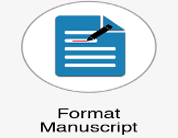Holistic solution to an old "mystery": the global role of antibiotic consumption patterns in the spread of certain non-contagious diseases in EU countries
Abstract
The discovery and extensive utilization of antibiotics are highly contributed to the considerable lengthening life expectancy of human beings. Antibiotics, mixed with animal fodder, produced considerable growth promoting effect and hence, extended the indications of antibiotics at a much higher level. The indiscriminate use of antibiotics quickly resulted in the emergence of poly-resistant pathogens and the extensive antibiotic pollution of the environment, particularly of the surface water and rivers trough human and animal excreta. Along with extensive and ever increasing antibiotic consumption/pollution, the pandemic-like spreading of certain non-contagious diseases like obesity, diabetes (Type 1-2 T1DM, T2DM), Alzheimer disease (AD), Parkinson disease, multiple sclerosis (MS) etc. started unfolding, which was called as a slow moving disaster, without having any appropriate explanation of the phenomenon. The parallel appearance of those “pandemics”, which appeared simultaneously with the extensive antibiotic consumption, might indicate some kind of association. As far as several publications have reported the crucial role of altered gut flora in the development of metabolic disorders (diabetes, obesity) and neurodegenerative diseases alike (PD, AD, MS), it might be suspected that antibiotics, acting through the modification of microbiome, could influence the morbidity (prevalence) of those, non-infectious diseases. This concept, described below, might serve as a unified explanation, not excluding other, contributing causative factors, for the phenomenon, outlined above.
Full Text:
View Full TextReferences
Hoel D, Williams DN, Berkelman RL. Antibiotics: Past, present, and future: Unearthing nature's magic bullets. Postgraduate medicine. 1997 Jan 1; 101 (1): 114-22. https://doi.org/10.3810/pgm.1997.01.139
https://www.khanacademy.org/science/health-and-medicine /current-issues-in-health-and-medicine/antibiotics-and-antibiotic-resistance/a/antibiotics-an-overview
Stokstad EL, Jukes TH, Pierce J, Page Jr AC, FRANKLIN AL. The multiple nature of the animal protein factor. Journal of Biological Chemistry. 1949; 180: 647-54.
Argudín MA, Deplano A, Meghraoui A, Dodémont M, Heinrichs A, Denis O, Nonhoff C, Roisin S. Bacteria from animals as a pool of antimicrobial resistance genes. Antibiotics. 2017 Jun; 6 (2): 12.
https://www.swissre.com/dam/jcr:b8c6410f-755b-4d13-836d-f611c3510a3d/amr_thomas_boeckel.pdf
Guzman MA, SCRIMSHAW NS, MONROE RJ. Growth and development of Central American children. 1. Growth responses of rural Guatemalan school children to daily administration of penicillin and aureomycin. American Journal of Clinical Nutrition. 1958; 6: 430-8.
Robinson P. Controlled trial of aureomycin in premature twins and triplets. The Lancet. 1952 Jan 5; 259 (6697): 52.
https://www.ecdc.europa.eu/en/publications-data/ surveillance-antimicrobial-consumption-europe-2018
https://www.who.int/publications/10-year-review/ncd/en/index2.html
Non-communicable Diseases Progress Monitor, 2017. Geneva: World Health Organization; 2017.
Liang D, Leung RK, Guan W, Au WW. Involvement of gut microbiome in human health and disease: brief overview, knowledge gaps and research opportunities. Gut pathogens. 2018 Dec; 10(1):3.
Almeida A, Mitchell AL, Boland M, Forster SC, Gloor GB, Tarkowska A, Lawley TD, Finn RD. A new genomic blueprint of the human gut microbiota. Nature. 2019 Apr; 568 (7753): 499. https://doi.org/10.1038/s41586-019-096 5-1
Zimmermann P, Curtis N. The effect of antibiotics on the composition of the intestinal microbiota. Journal of Infection. 2019 Oct 18. https://doi.org/10.1016/j.jinf. 2019.10.008
Joel, L. (2019), Antibiotics are flooding Earth’s rivers, Eos, 100, https://doi.org/10.1029/2019EO127001
Ternak G. Antibiotics in the environment: the possible inadvertent effect on human morbidity & mortality. Microbial Pathogens & Strategies for Combating Them: Science, Technology & Education. 2013;3: 1455-60.
Ternak G. Global Effect of Antibiotic Consumption/ pollution on Human Health. LAP Lambert Academic Publishing; 2016.
Ternak G. Antibiotics may act as growth/obesity promoters in humans as an inadvertent result of antibiotic pollution?. Medical hypotheses. 2005 Jan 1; 64(1):14-6.
Ternak G, Edel Z, Feiszt Z, Szekeres J, Visegrady B, Wittmann I. Selective Association between Cephalosporin, Quinolone, Macrolide, and Penicillin Antibiotic Consumption and Childhood Obesity in Europe. Health. 2015;7(10):1306.
Ternák G, Kuti D, Kovács KJ. Dysbiosis in Parkinson’s Disease might be Triggered by Certain Antibiotics. Medical Hypotheses. 2020 Jan 9:109564. https://doi.org/10.1016/j.mehy.2020.109564
https://www.ecdc.europa.eu/en/antimicrobial-consumption/da tabase/quality-indicators
https://www.diabetesatlas.org/upload/resources/2019/IDF_Atlas_9th_Edition_2019.pdf,
https://www.thelancet.com/journals/laneur/article/PIIS1474-4422(18)30403-4/fulltext
https://www.thelancet.com/pdfsjournals/laneur/PIIS1474-44 22(18)30443-5.pdfand
GBD 2016 Parkinson's Disease Collaborators. Global, regional, and national burden of Parkinson's disease, 1990–2016: a systematic analysis for the Global Burden of Disease Study 2016. 2018, 17: 939–53 https://doi.org/10. 1016/S1474-4422(18)30295-3
https://www.oecd-ilibrary.org/docserver/health_glance-2013-en.pdf?expires=1574599066&id=id&accname=guest&checksum=F67016E169707E
https://www.oecd.org/els/health-systems/Obesity-Update-2017.pdf
Tettey P, Simpson Jr S, Taylor BV, van der Mei IA. The co-occurrence of multiple sclerosis and type 1 diabetes: shared aetiologic features and clinical implication for MS aetiology. Journal of the neurological sciences. 2015 Jan 15;348(1-2):126-31. https://doi.org/10.1016/j.jns.2014.11. 019
DOI: https://doi.org/10.36462/H.BioSci.20204
Refbacks
- There are currently no refbacks.
Copyright (c) 2020 Ternák

This work is licensed under a Creative Commons Attribution 4.0 International License.
...........................................................................................................................................................
Other "Highlights in" Journals
Highlights in Bioinformatics, Highlights in Chemistry, Highlights in Science, Highlights in Microbiology, Highlights in Plant Science
........................................................................................................................................
International Library of Science "HighlightsIn" is an Open Access Scientific Publishers, aiming to science and knowledge support












